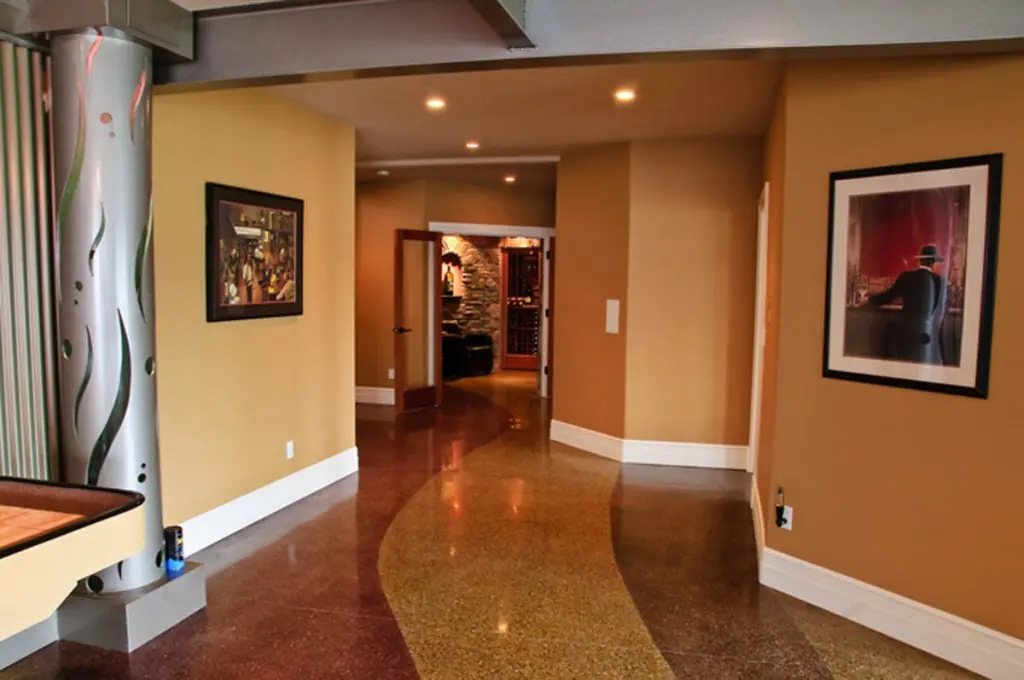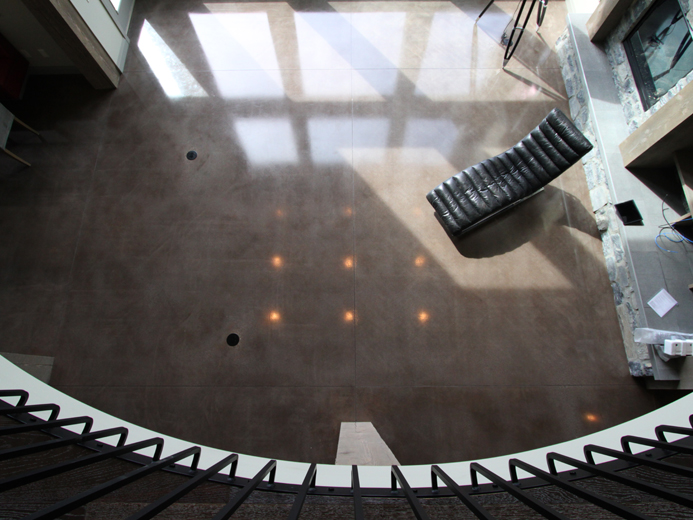Concrete Acid & Staining
Kelowna Concrete Acid Staining imparts a luxurious richness that can’t be achieved by any other coloring medium. Rather than produce a solid, opaque effect like paint, stains permeate the concrete to infuse it with luminous, translucent tones that vary depending on the surface they are applied to and the application techniques used. The results can mimic everything from polished marble to tanned leather to natural stone or even stained wood.
Kelowna Concrete Stains for concrete come in two general categories: acid-based chemical stains and water-based acrylics. Most acid stains are a mixture of water, hydrochloric acid, and acid-soluble metallic salts. They work by penetrating the surface and reacting chemically with the hydrated lime (calcium hydroxide) in the concrete. The acid in the stain lightly etches the surface, allowing the metallic salts to penetrate more easily. Once the stain reacts, it becomes a permanent part of the concrete and won’t fade, chip off or peel away. The palette for acid-etch staining is generally limited to earthy tones, such as tans, browns, terra cottas, and soft blue-greens.
If you want to go beyond the subtle drama and subdued earth-toned palette of acid staining, consider using water-based stains, which come in a much broader spectrum of hues. Like acid stains, water-based stains (typically a blend of acrylic polymers and pigments) penetrate the concrete to produce permanent color, ranging from translucent to opaque depending on the product.


Both types of stain can be applied to new or old and plain or integrally colored concrete. They are especially effective for revitalizing dull, lackluster surfaces. Because they penetrate the concrete surface, most stains have excellent UV stability and wear resistance, permitting their use on interior or exterior concrete. Applications range from walkways and patios to family room floors and kitchen countertops. They can also be applied to vertical surfaces such as walls or fireplace surrounds.
Like stains for wood, concrete stains are semi-transparent and are intended to enhance rather than disguise the surface. They will not hide cracks, blemishes or other flaws in existing concrete. Nor will they completely mask an underlying color or conceal the texture of the surface. An existing concrete slab with major cracks or spalling is usually not a good candidate for staining because any patchwork is likely to show right through the stain.
Because stains must be able to soak into the concrete to achieve full-color saturation, they shouldn’t be applied to surfaces covered by anything that can inhibit stain penetration, such as dirt, grease, glues, coatings, curing membranes and sealers.

